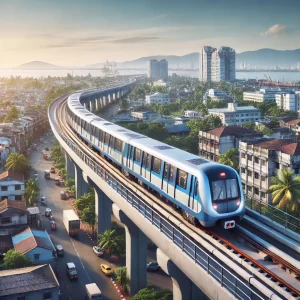Kochi’s Metro Expansion: How It’s Changing Urban Transport
This article dives into the ongoing metro expansion, its potential impact, key factors driving development, and what the future holds for Kochi’s urban transport.
The Current State of Kochi Metro
Kochi Metro’s Phase 1 spans 25.2 km from Aluva to Petta, covering 22 stations. With modern facilities, seamless ticketing, and a commitment to environmental sustainability (such as solar-powered stations), it has become a model for metro projects across India.
However, rapid urbanization and population growth demand an expanded network to reach more areas, reduce reliance on private vehicles, and support the city’s evolving infrastructure needs.
Kochi Metro Expansion Plans: What’s on the Horizon?
The metro’s expansion is being rolled out in multiple phases:
- Phase 1A (Petta to SN Junction): A 1.8 km extension, inaugurated in 2023, improves connectivity to the southern parts of the city.
- Phase 2 (Jawaharlal Nehru Stadium to Infopark via Kakkanad): A major 11.2 km extension under construction, this phase aims to connect the bustling IT hub of Kakkanad, benefiting thousands of tech employees.
- Water Metro Integration: A unique addition — Kochi’s Water Metro project integrates with the metro network, enhancing connectivity to the islands and promoting eco-friendly water transport.
- Future Phases: Proposed extensions to suburban areas like Angamaly, Thripunithura, and Nedumbassery (Cochin International Airport) aim to make the metro an integral part of regional transit.
Key Factors Driving Kochi’s Metro Expansion
Several factors are fueling the push for metro expansion in Kochi:
- Traffic Congestion Relief
- Kochi’s roads are notoriously congested, especially during peak hours. The metro offers a faster, more efficient alternative, reducing travel time and easing road traffic.
- Economic Growth and Job Opportunities
- Enhanced metro connectivity supports Kochi’s economic growth, making it easier for people to access business districts, IT parks, educational institutions, and healthcare centers.
- Environmental Sustainability
- With Kerala’s commitment to reducing carbon emissions, metro expansion encourages public transport use, lowering air pollution and traffic-related fuel consumption.
- Urban Development and Real Estate Boost
- Metro lines often spur development along their routes. New residential complexes, commercial hubs, and retail spaces are emerging near metro stations, reshaping the city’s skyline.
- Improved Livability and Accessibility
- For daily commuters, students, and tourists, the metro offers comfort, safety, and affordability. Expansion into suburbs ensures better accessibility for people living on the city’s outskirts.
- Tourism and Cultural Access
- Kochi’s thriving tourism industry benefits from metro accessibility to key landmarks like Fort Kochi, Mattancherry, and Marine Drive, offering tourists a hassle-free travel option.
Challenges and Considerations
While the metro expansion brings immense potential, challenges must be addressed to ensure its success:
- Funding and Cost Management: Balancing development costs with fare affordability is crucial.
- Land Acquisition and Urban Planning: Expanding in densely populated areas requires careful planning to avoid displacement and infrastructure disruption.
- Last-Mile Connectivity: Ensuring buses, autos, and other transport modes integrate seamlessly with metro stations enhances convenience.
- Public Awareness and Ridership: Encouraging people to shift from private vehicles to metro services is vital for long-term sustainability.
Future Vision: A Smart, Sustainable Transport Ecosystem
Kochi Metro’s expansion aligns with a broader vision for a smart, sustainable urban transport ecosystem. Key future possibilities include:
- Driverless Metro Services: Advancements in automation could bring fully autonomous metro trains, increasing efficiency and reducing operational costs.
- AI and IoT Integration: Smart ticketing, real-time passenger data, and predictive maintenance systems could enhance user experience and metro performance.
- Electric Buses and Bike Sharing: Integrating electric buses and bike-sharing services at metro hubs promotes last-mile connectivity and eco-friendly travel.
- Transit-Oriented Development (TOD): Creating walkable, mixed-use communities around metro stations can reduce urban sprawl and promote healthier, greener living.
Conclusion
Kochi’s metro expansion is more than just an infrastructure upgrade — it’s a catalyst for urban transformation. By improving mobility, reducing traffic, supporting economic growth, and promoting sustainability, the metro is reshaping the city’s future. With thoughtful planning, community engagement, and technology integration, Kochi Metro could become a benchmark for urban transport projects across India.
As the network expands, Kochi is steadily moving towards becoming a smarter, greener, and more connected metropolis. Whether you’re a daily commuter, a business owner, or a tourist, the metro promises a smoother, faster, and more sustainable way to navigate the Queen of the Arabian Sea.

0 Comments